Between Two Worlds
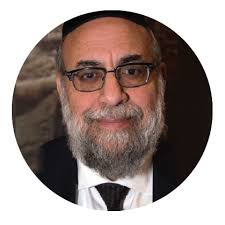
It started out feeling like a cold, and before I knew it, I was in critical condition with little hope for survival. Surely, the tefillos of the klal were the ropes that pulled me out of the abyss. Now, where does a person go once he’s experienced techiyas hameisim?
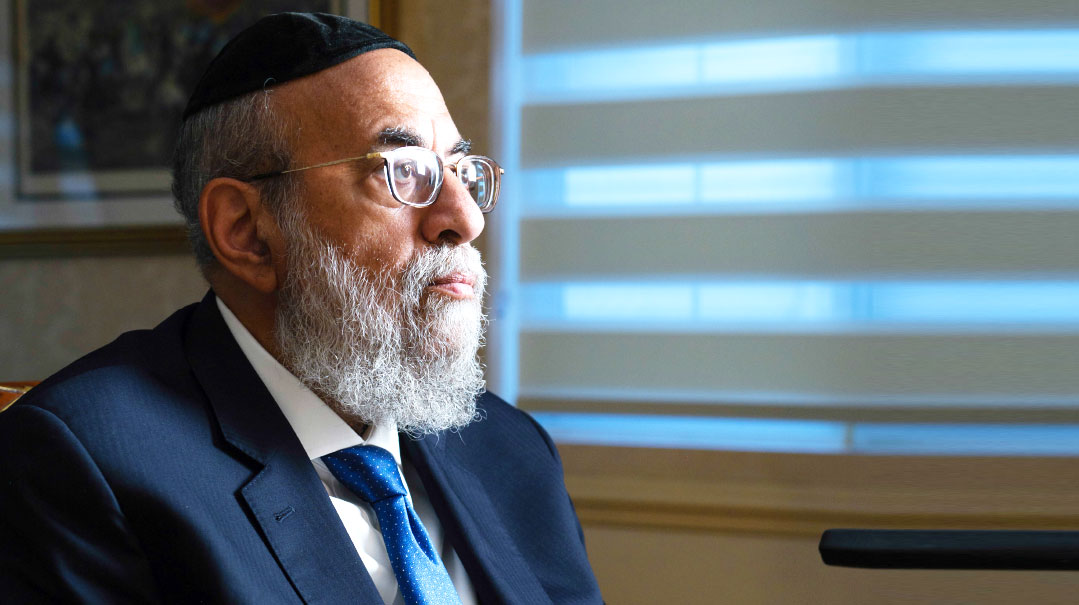
Rabbi Chaim Aryeh Zev Ginzberg is rav of the Chofetz Chaim Torah Center of Cedarhurst, the founding rabbi of Ohr Moshe Torah Institute in Hillcrest, Queens, and a popular author and lecturer. He and his wife are also the founders of Ohel Sarala — created as a zechus for the aliyas neshamah of their daughter Sarala a”h. After he was struck with COVID-19, doctors gave him a near-zero chance of survival. Here is his story.
Purim 2020
T
his past Purim was a new kind of enjoyable for my wife and me. After years of carpooling the kids to their rebbeim and friends, and then after years of getting together with our own friends, we found ourselves alone.
A few days before Purim, when I realized we would be alone for the seudah and that my elderly mother (may she live until 120) would also be spending Purim alone in her apartment in Queens (she stopped joining us when my father a”h passed away), we decided to bring our seudah to her. Afterward, we stopped by each of our sons’ homes, where they were holding their own lively seudos with their kollel friends. We then returned home with enough time to prepare for our annual Simchas Purim with members of the shul, always a beautiful way to end this special day.
Little did I know that if not for a miraculous reprieve, this could have been my very last Yom Tov celebration.
Many people in our community, and in the Tristate area in general, had by now been hit with COVID-19, and about a week later, I too began to feel quite ill, like a bad case of the flu. My neighbor and other friends too, were not feeling well and we began to compare notes. I was a bit concerned so I was tested, and yes, I tested positive, but I wasn’t too worried, as I didn’t have high fever and seemed to be doing better than some of the others.
Then I took a turn for the worse. I called my longtime dedicated physician, Dr. Herbert Lempel, for advice. He advised me to go for a chest X-ray, as he said I sounded out of breath while talking to him. I called a Hatzolah friend who tested my oxygen level, didn’t like what he saw, and then quickly drove me to Winthrop Hospital in Mineola, Long Island — an affiliate of NYU — and pulled some strings to get me admitted right away. But still, I wasn’t overly worried. At that point the medical community was still examining how COVID-19 presents, and I assumed that if my case turned into pneumonia, I’d get some antibiotics and go home.
When I left home, I told my wife I’d be back in a few hours. And those few hours became six-and-a-half weeks.
The chest X-ray looked fine, but my oxygen level was still low, so they decided to check me in for observation and gave me a small oxygen mask to help me breathe easier. This was early on in the pandemic, so although medical staff were wearing masks and gloves, there wasn’t yet a specific COVID-19 protocol. The next morning the attending doctor came in and told me that while the second X-ray didn’t look any worse than the first, my oxygen level was continuing to drop, so they gave me a larger face mask to wear. When I asked the doctor, “Is there any serious issue here?” he replied, “No, you should be fine.”
Later that day, a nurse came in and told me that my oxygen level was still dropping despite the mask, and if it didn’t start going up by evening, they’d send me to the ICU. That put me into a panic, and I quickly texted my doctor as to what that meant. He assured me that it would all be okay. That was my last text to him.
March 25, 2020
It was two weeks after Purim, and two weeks before Pesach, when my world turned upside down. The last thing I remember before being rushed into the ICU was a doctor explaining to me what intubation means — and that they should hopefully be able to extubate within a day or two. That day or two turned into 30 days, while I hovered between two Worlds.
Within days, my condition continued to deteriorate and I was listed as extremely critical. As I discovered later, word went out from family and friends, and tens of thousands from all over the world began davening on my behalf. I’ve now been told of Tehillim chats, challah baking, and visits to kivrei tzaddikim. While I was unconscious, my soul fighting for every breath, little did I know that people had arranged for Rav Yaakov Meir Shechter to host a special Tehillim vigil in his house, for Rav Gamliel Rabinovitch to gather a group to go to Meron, the Skverer Rebbe to daven for me on a daily basis, and the entire Yeshiva Chofetz Chaim to mobilize daily Tehillim on my behalf.
It was a battle between two Worlds. Each day was worse than the day before, yet Klal Yisrael didn’t stop storming the Heavens with their tefillos.
Rebbetzin Avigail Ginzberg remembers
Those first weeks when we couldn’t visit, when so many Covid-19 patients were left alone and helpless, often dying alone, we knew we had to be as proactive as we could. We were constantly on the phone calling the ward, driving the staff nuts. Things were so crazy during those early weeks and the staff was so overwhelmed that they didn’t even have time to think about the patients’ families, but because of us — when they saw how we were calling all the time asking for reports and demanding that we speak to doctor, a nurse, a PA — they instituted a new procedure, putting someone in charge of calling patients’ families at least once a day.
Mrs. Ilana Jeger shares
When my father was admitted to the ICU, my husband and I were in constant contact with the doctors and nurses. We live two blocks away from my parents, and my husband and I are very close with Dr. Tuvia Marciano, who was one of our main contacts and a real malach who was instrumental in my father’s survival. And as Hashgachah would have it, a friend of mine from high school who I have not spoken to in years, happened to be a nurse in my father’s unit and reached out to let me know that she’d be there for us and do whatever she could. This wonderful nurse, Huvie Novack-Peltz, became like part of our family. Along with the chat she started with my mother and me to constantly update us, she would also go into my father’s room — even though it meant suiting up each time — and would give him chizuk and messages from us.
Our family understood the direness of the situation based on our previous encounters with the world of hospitals and illness. My husband and I are unfortunately quite familiar with this world, as we lost our bechor, Chanoch a”h, when he was almost three years old — he contracted meningitis a few hours after birth, and we spent the next three years practically living in hospitals. And when my sister Sarala passed away in 2015, my siblings and I took an active part in her care. So none of this was foreign to us.
April 8, 2020
Erev Pesach was the worst day of all.
We had not been home for Pesach for many years, and this year too, we had been invited to attend the Gateways Pesach program in New Jersey, led by our dear friend, the renowned Rabbi Mordechai Suchard. The Gateways program is always something very special, but with the advent of COVID-19, all Pesach programs were closed, so we prepared to stay home.
My wife was actually looking forward to making Pesach for our family, something she hadn’t done in years. A few days after Purim the two of us went shopping for our Pesach order, neither of us dreaming that instead of leading the Seder for my family, I would be on the brink of death.
My wife received the call early on Erev Yom Tov. She was told by the ICU attending doctor that my kidneys were failing, the life-support machines weren’t doing anything, I was totally unresponsive to treatment, and that there was no need to prolong the “inevitable.” He suggested removing the life support and giving it to another patient who had more of a fighting chance. He said I have only hours left and that she should come to say goodbye.
Right after my wife hung up, a dear friend, Boruch Singer, called her for an update, and when he heard that the doctor suggested pulling the plug, he sprang into action and quickly called another friend, Bruce Teitelbaum. Bruce has a personal connection with Mr. Joseph Lhota, executive vice president of NYU Medical Center, with which Winthrop is affiliated, and he begged Mr. Lhota to intervene and make sure that everything possible would be done to prolong my life. And so, Winthrop was instructed not to disconnect the life support, and instead to redouble their efforts on my behalf and to continue with every possible technique. Mr. Lhota also instructed them that he wanted an update on my condition on his desk every two hours.
This was how my wife and children entered Pesach. My son-in-law Rabbi Yudi Jeger — executive director of Yeshiva Chofetz Chaim in Queens and a rav in our shul — reached out to the head of the Chevra Kaddisha to get instructions if there would be a turn for the worse on Yom Tov itself.
It was at this time that my brother-in-law Rav Betzalel Rudinsky, in consultation with Rav Dovid Feinstein, decided to add Chaim to my name. And the call for additional tefillos went out: Chaim Aryeh Zev Ben Aidel, in desperate need of rachamei Shamayim. (A few years ago before Pesach, I’d written an article where I quoted Rav Elyashiv ztz”l that Pesach night, Leil Shimurim, is a night that is mesugal for refuah, and people later told me that they spent the night saying Sefer Tehillim.)
Things couldn’t have been worse — but then, toward the end of the first days of Yom Tov, there was a sudden turnaround. One by one, my major systems started to kick in. My kidneys started working again and my blood pressure returned to normal. And my wife and family began to be cautiously hopeful — was a yeshuah still possible?
It seemed as if Klal Yisrael’s tefillos were working. As I was starting to respond to treatment, the doctors responsible for my care were astounded at the miraculous turnaround. One non-Jewish doctor told Reb Boruch Ber Bender of Achiezer (who was an invaluable help to my family through this ordeal) that there isn’t much he believes in, but he now believes in the power of Jewish prayer.
On Erev Yom Tov, they told us it was the end, and that they were letting me into the hospital to say goodbye. But then it was Seder night, and I said, “It’s Yom Tov, we’re going to do what we have to do, we’re going to celebrate, and it’s going to be a zechus for Abba.” I really don’t know how I had the strength to forge ahead like that, but one thing I knew: I had to be upbeat for my kids, and for myself. I couldn’t collapse. Exactly a year before, on the first day of Pesach, my mother had passed away. I didn’t believe it would happen again. I knew on her first yahrtzeit, she’d be a meilitz yosher for us.
— Avigail Ginzberg
Erev Yom Tov, my husband made arrangements with the Chevra Kaddisha for the worst-case scenario — we knew my father wanted to be buried near my sister on Har Hazeisim, but there were no flights out, and it was a two-day Yom Tov. We went into the Seder with the phone on the table.
I believe my father is here because of my mother. Throughout all the bleak updates, she was so infused with emunah and positivity that we kept asking, did she hear the same things we did? We had the most beautiful Seder, because her attitude was: You daven, you take things upon yourself, you do whatever hishtadlus you can, and then at a certain point, you just release it all and tap into emunah and bitachon.
— Ilana Jeger
We all have nisyonos that Hashem puts us through, but He also sweetens the din. With all the amazing malachim He sent — Dr. Marciano, Dr. Peller, a nurse Ilana knew who gave us updates every time she was on duty, and all the others — it was as if He were telling us, “You have to go through the nisayon but I’m going to make the rest easier.” We’re no strangers to nisyonos, and looking back at other tragedies we’ve lived through — fighting for Sarala’s life and losing her at 17 — you somehow get through it. Then you look back afterward and think, How in the world did I get through that? Because when you’re going through it, Hashem is holding you up.
— Avigail Ginzberg
April 14, 2020
The neis continued unfolding, and I was transferred from the ICU to the step-down unit. The first thing I remember was a doctor shaking my shoulder and calling my name. As I opened my eyes he was holding a tablet in front of me, with my wife and daughter Ilana excitedly telling me that I’d im yirtzeh Hashem be fine and would be coming home soon.
I recognized them of course, but I was totally confused and disoriented, which I learned later is typical for intubated and heavily sedated patients in recovery. For the first week I couldn’t even talk and was in and out of cognition, and so my family was advised not to overload me with facts — how long I’d been in a coma, that I had kidney failure and almost died, that I missed Pesach… I don’t have much recollection of those weeks, but for some reason, I thought that I was in Eretz Yisrael, and when the doctors asked me if I knew where I was, I’d tell them, “Yes, in a hospital in Israel.” I believed this for most of my remaining stay in the hospital, and in one of my first conversations with my wife, I asked her if she was at the airport coming to pick me up.
Those two weeks in the step-down unit were most difficult. I was in bed without machines attached, yet I couldn’t move any of my limbs, and being in a COVID-19 unit, wasn’t getting more than the minimal hands-on care. Like in any hospital, there were good, caring nurses and also not-so caring nurses, but there were some genuine malachim — such as Dr. Abe Peller who made Kiddush and sang Shalom Aleichem for me on Friday night, and Dr. Tuvia Marciano, a genuine tzaddik who was a steady source of information and support to my family. He often called my wife on his cell phone so I could speak with her, as no family members were allowed in the hospital, and was there for me in so many other ways, including offering to put tefillin on me daily — although most days I was so out of it that didn’t have the wherewithal. (Both doctors were ill with COVID-19 themselves when I was first admitted, but had recovered and were back to work healing others.)
People assume that once you’re off the life support and you’re on the mend, you’ll be fine. My husband was in a bed for six weeks and didn’t move — and the staff was way too overwhelmed to move or turn him regularly. And once he was off life support, he was in the COVID-19 unit for two weeks, where the staff had a pretty much hands-off policy with the patients. For example, the staff were certainly too overwhelmed to sit near a patient and help him eat, besides for which the regulations didn’t allow it. This is a good hospital, and it was no fault of anyone, but it just happened — and it meant coming home with a lot of issues.
— Avigail Ginzberg
April 28, 2000
Finally came the day that I would be going home to my beloved family. I wasn’t in good shape — I still couldn’t move and needed intense rehab — but my family decided that creating a rehab environment at home would be far preferable than going to a facility, which would again mean isolation.
My wife came to the hospital but had to wait outside while I was wheeled to the ambulance, and then drove behind the ambulance escorting me home. I asked my wife not to make my homecoming a public affair, and while she assured me that it would be just family, when I arrived home there were my children, grandchildren, and neighbors holding up “welcome home” signs. The song “Thank You Hashem” was blasting as I was wheeled inside. I’m still not sure how (or thanks to who) but the video of my homecoming went viral — friends around the world let me know that they’d seen it.
But there was a bit of a mystery on that clip: The video showed me being taken down from the ambulance while looking into a sefer. I’ve had dozens of requests since to explain what sefer I was learning. In my shul, one fellow told me he had a wager with his friend — he said I was catching up on daf yomi, and the other said I was reviewing the parshiyos of Chumash I missed.
They were both wrong. As I got into the ambulance, I was thinking about the brachah to make upon entering my home. Should it be a shehecheyanu with Sheim u’Malchus? How do I express the ultimate gratitude and appreciation to HaKadosh Baruch Hu? And then I remembered hearing from Rav Shimon Shwab ztz”l that each and every time a person leaves his house in the morning, and again when he returns to his house at night, he should have in mind the words of the Rambam in Hilchos Mezuzah 6:13: that whenever a person enters or leaves his house, he should remember his love for Hashem and how Hashem alone runs the entire world.
And then I thought, the most proper thing for me to do as an expression of my hakaras hatov is to learn that Rambam again before crossing my doorstep, so I can properly have in mind the Oneness of Hashem. I asked my son Dovid to please bring me out the Rambam on hilchos mezuzah, and that’s what I was learning coming out of the ambulance. It was to be a very private moment, but in the end, that moment was shared with much of the Jewish world.
As I was wheeled inside, I was in shock: My wife, my son-in-law and daughter Rabbi Yudi and Ilana Jeger, our wonderful neighbors Shalom and Rena Vegh, Reb Boruch Ber Bender of Achiezer, and the Sh’or Yoshuv COVID-19 care-center staff had transformed the den into a veritable hospital room, with every type of equipment I would possibly need for my comfort and recovery.
A little while after I was settled, my family began to fill me in on what had occurred. “We really don’t want to overwhelm you,” they said, “but we have to tell you something now before you hear it from others.” They told me how I was in a coma for 30 days and that I was closer to the Next World than This one. They told me about the phone call on Erev Pesach from the doctor. They told me that the head of the Vaad Chevra Kaddisha was consulted to review what happens if there is a petirah on Yom Tov. They then shared with me all the Tehillim and tefillos that were said all over the world. They showed me 30 different Whatsaap groups created just for Tehillim. And then they shared that I now have a new name — Chaim.
Finally, they told me about so many others who Rachmana litzlan didn’t make it. The news of the petirah of the Novominsker Rebbe ztz”l was in itself overwhelming; I was told about others — friends I’d spent summers with, and those with whom I worked together for the klal over the years. The one thing I wasn’t told about was that my dear friend and partner for over 25 years — Leibel Lederman — was critically ill in the hospital at that time. He was niftar about two weeks later.
I felt completely overwhelmed, like Choni Hama’agal who woke up after 70 years to a new world. Was there still no school? Were people still out of work, seeing their parnassah crashing? And how could I even begin to digest just how many people we’d lost? The entire first night home I couldn’t sleep, struggling to understand why I was zocheh to this revealed miracle when so many others — better and greater — were not.
The next morning, my wife saw my struggle and suggested I call Rav Shaya Cohen, the rosh yeshivah of Yeshiva Zichron Aryeh in Bayswater. He literally began to cry at hearing my voice, and when I told him of my inner struggle, his cry turned into a laugh. “Do you know what kind of kiddush Hashem you created by surviving? Everyone from all over the world was davening for you, and now that they see you home, it restores their appreciation of tefillah,” he told me. “There’s no greater kiddush Hashem than that and you were the vehicle — so just rejoice and don’t think about anything else.”
It’s been six weeks since I’ve returned home, and I simply don’t have the words to properly express my hakoras hatov, not just for the miracle of my survival and the superhuman effort and dedication of my family during this period, but also for the condition in which I came home. Many people who went through this ordeal have multiple ongoing medical issues — the need for oxygen, dialysis, and other continued treatments for compromised organs. Baruch Hashem, I have no lingering internal issues, but I do have a major physical challenge to overcome.
The muscles in my body were not used for many weeks, resulting in extremely weak muscle tone. My right leg lost all its movement due to a hematoma that developed while I was lying immobile in the ward, which led to severe nerve damage. I’ve been in need of major rehabilitation, and baruch Hashem, have been making steady progress. I’m now slowly learning to walk with a cane, am able to do steps, and will hopefully, with hard work and siyata d’Shmaya, soon get to where I was before.
When I told my friend Rabbi Eli Dessler from Cleveland about my leg, he shared an incredible vort from the Chofetz Chaim that gave me great chizuk. He told me, “My father once told me a vort that he had heard from his father, Rav Eliyahu Dessler, who heard it from his father, Rav Reuvain Dov Dessler, who upon a visit to the Chofetz Chaim, heard the following: Every morning we make the brachah, ‘Hameichin mitzadei gaver,’ we thank Hashem for every step we’re able to take. Then he explained that when a person is born, Hashem allots him a certain amount of steps in his lifetime, and when Hashem sees that the person is using up his steps too quickly, He puts that person in the hospital or to bed, to enable him not to use up his steps. So what seems like a punishment is really a brachah for longer life.”
Several years ago, when I was dealing with a difficult personal matter, I approached the Sar HaTorah, Rav Chaim Kanievsky, and asked him if there was something I could do to protect myself from any negative fallout. He answered on the spot, “Say ten kapitlach Tehillim every day.” I immediately started this and continued it long after the problem went away. I never missed a day until the day I went into the hospital. The last kapitel I said, that very morning, was Kapitel Mem, Chapter 40. When I said the words, “Retzei Hashem lehatzileini, Hashem le’ezrasi chushah” (Hashem, be willing to save me, Hashem, hasten to my help), little did I know how significant that pasuk would be for me in the days ahead.
A little while back, when I had given up saying the daily daf shiur, I asked Rav Chaim what I should learn with the new time that I had on my hands. And he answered, “Focus on Mishnayos b’iyun and learn Taharos and Zeraim with the peirush of the Chazon Ish.” Since then I’ve followed that directive very diligently, committing to learn a certain number of Mishnayos every day.
About two weeks after I’d come home, my wife asked me if I had restarted my Mishnayos regimen yet, and I told her I just wasn’t ready for it yet. She then said, “You know, Shavous is next week and that would be a good time to start it up again.” And I agreed. I didn’t even remember what Seder I was in, so I asked my wife to look for the one with the bookmark inside. She brought me Seder Nashim and I saw that I had just finished the last mishnah in Maseches Sotah the very morning I went into the hospital.
I was shaken to the core. The last mishnah I learned ends with the words, “Techiyas hameisim will come at the hands of Eliyahu Hanavi zachur latov.” I was zocheh to techiyas hameisim and it happened on the first day of Pesach, when we call upon Eliyahu Hanavi to join us. Who knows if, in the zechus of learning that last mishnah, I was zocheh to this neis?
Baruch Hashem, with Klal Yisrael’s continued tefillos, I’m improving every day. But when one is zocheh to techiyas hameisim, it not only requires thanks, but also deep introspection and self-examination. It starts with the very first words that we say every morning when we wake up: “Modeh ani lefanecha, Melech Chai Vakayam, shehechezarta bi nishmasi.” My goal for the remainder of my new life is to live every minute of it with the recognition that HaKadosh Baruch Hu is the “Melech Chai Vekayam” — the One Who gives and is constantly restoring life. May I always live the rest of my life accordingly. —
As grateful as we are for this incredible neis, it’s far from over. Baruch Hashem, we have my father here, but these past few weeks have been a different type of difficult, its own separate chapter. Because we were living this nightmare — we were pretty sure we’d lost him — we were just so grateful that he was back that it didn’t matter to us what kind of state he came home in. But of course, he doesn’t remember any of that. The last thing he remembers is that he was functioning at 100 percent. And then to wake up and not be able to do anything independently after being such a powerhouse of action and hashpa’ah was extremely difficult for him. We couldn’t understand why he was having such a hard time, and he couldn’t understand why we were so happy just to have him alive.
We arranged full-time care, with aides and therapists — that first week he couldn’t even lift his head up. Those first weeks were extremely challenging, but my gratitude was immense. No one should have to go through this for a parent, but a month ago I thought I’d never be able to do kibbud av again.
— Ilana Jeger
When we finished counting Sefirah on Erev Shavuos, I looked at my brother, who was joining us for Yom Tov, and said, “Remember Day One? We’ve just counted Day 49 and lived through a miracle. Who would have thought we’d been in this place today?”
— Ilana Jeger
After living through a miracle, you can’t go back to business as usual. As challenging as things are now for us, my heart breaks for all the families who didn’t have the yeshuah that we had. People were telling me, “Oh, it must be so difficult for you” — we had a whole hospital and rehab set up in the house. But I thought of the alternative and told them, “Believe me, I’m grateful to be going through it.” I asked one of the rehab doctors, “How long should it take for patients like this to regain their strength?” And he answered, “I can’t tell you, we’ve never had a patient like this — none of them survived.”
— Avigail Ginzberg
My husband and I have been through a lot, but we also have so much to be grateful for. We have five boys — four in This World — and we’ve developed a mindset to say Nishmas whenever there’s another milestone, because how much, if anything, can we really control? It started when our oldest was alive — we’d stop and say Nishmas before getting into the car every time we were able to leave the hospital, or whenever he pulled through again. So when my father was put into ICU and the prognosis looked so grim, our family decided that every time there was a positive report, even something small like the blood pressure numbers stabilizing, we would all say Nishmas. It became a thing — we called it our Nishmas moments. Any time we got a report of some change, even incremental, we’d all stop what we were doing and say Nishmas.
— Ilana Jeger
There were so, so many tefillos from Klal Yisrael. We never know where those tefillos land, but we know they never go to waste — we don’t always get the answers we want, but just because Hashem says no, no tefillah is ever ignored. We’ve experienced a “no” more than once, yet I held tight to the belief that the tefillos were still going to have an effect. Now I tend to think that all the tefillos that were sent up for a refuah for our daughter Sarala landed on my husband.
— Avigail Ginzberg
(Originally featured in Mishpacha, Issue 818)
Oops! We could not locate your form.


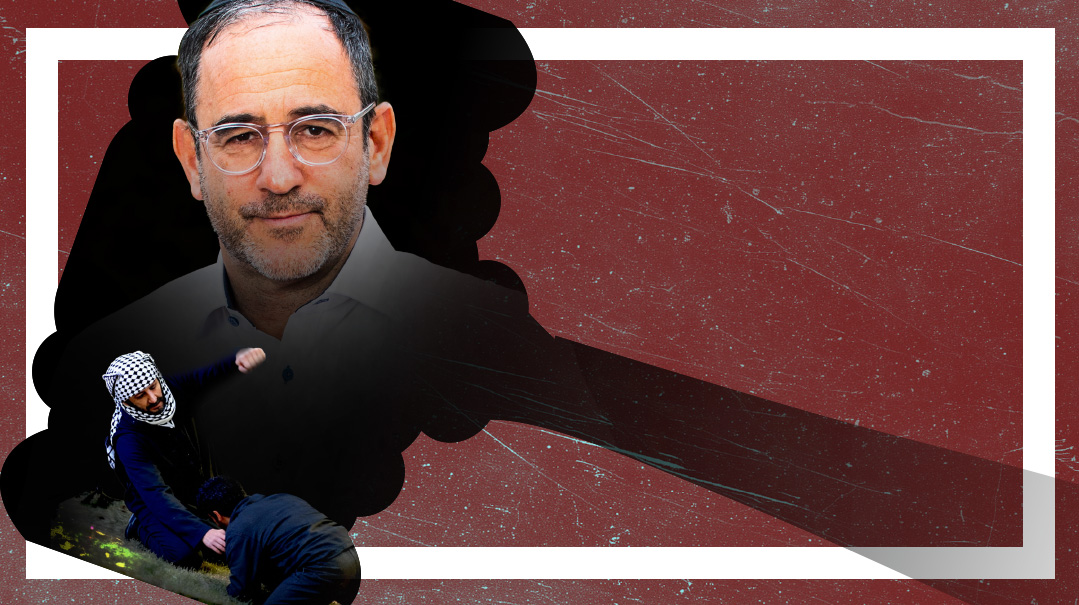
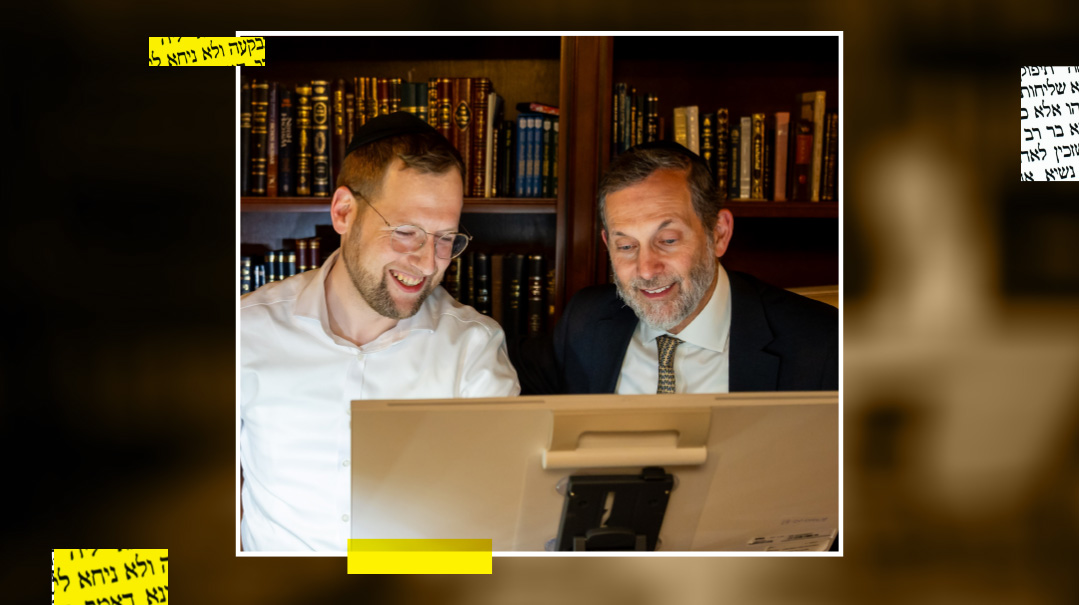
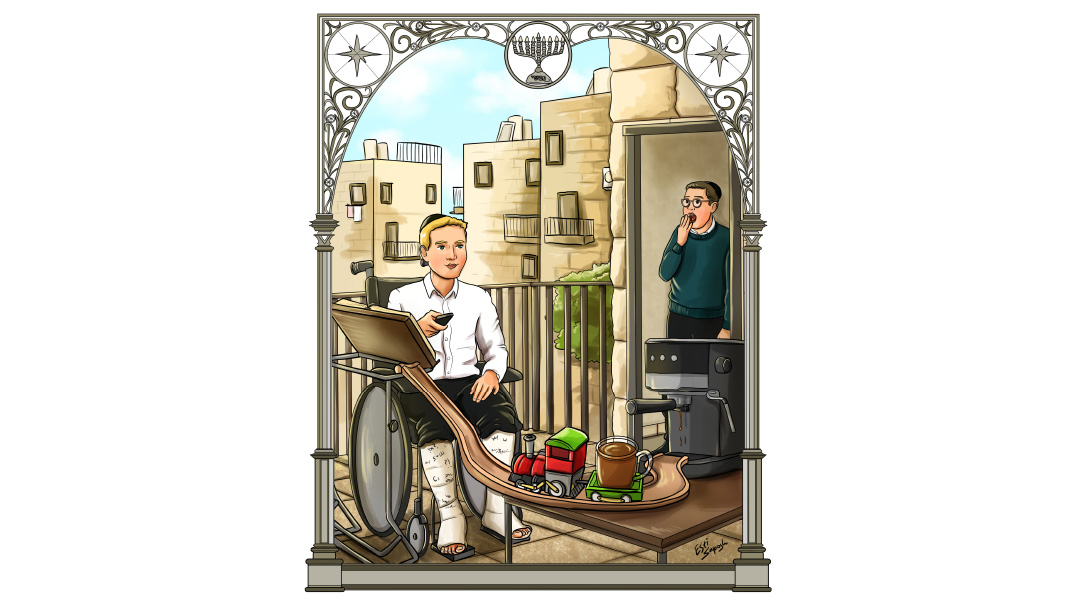
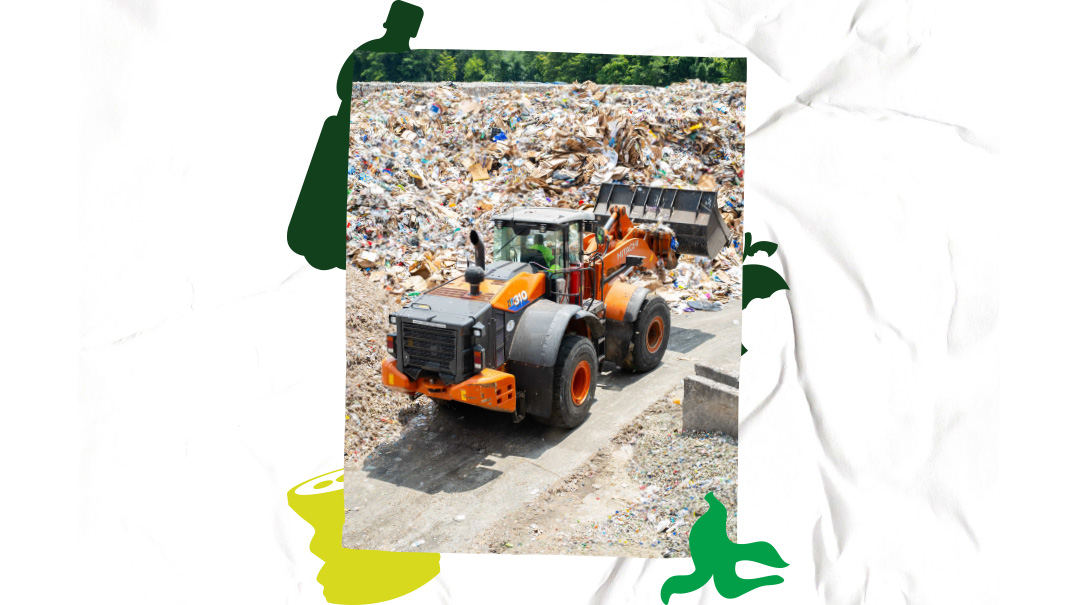

Comments (5)